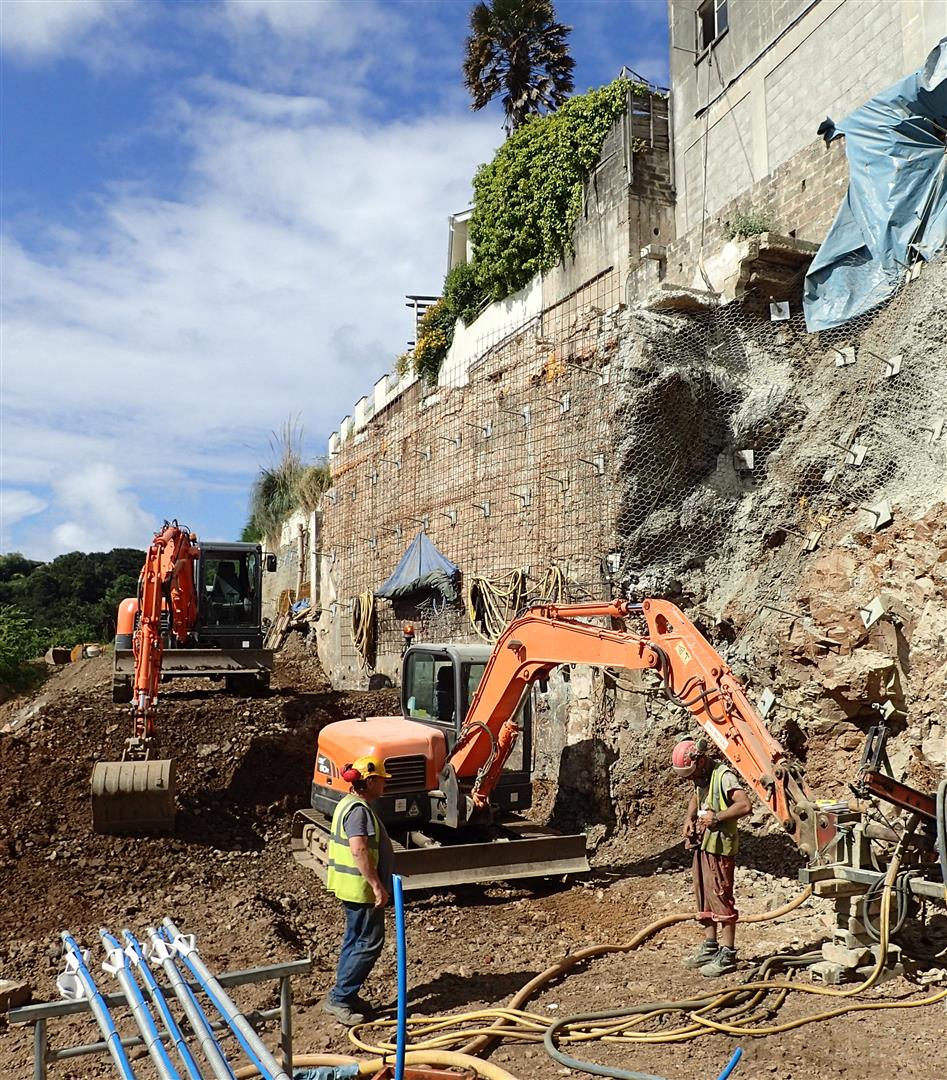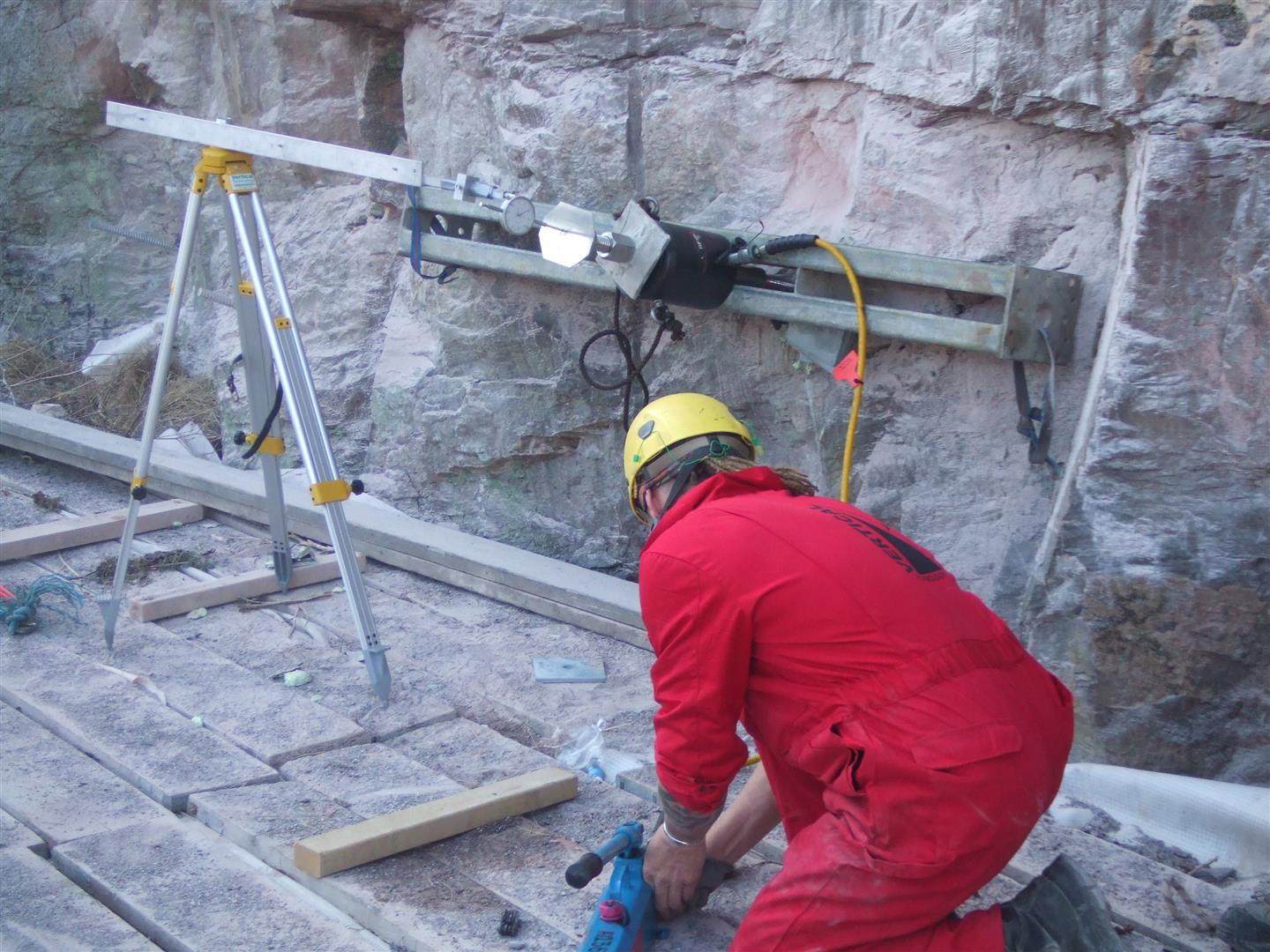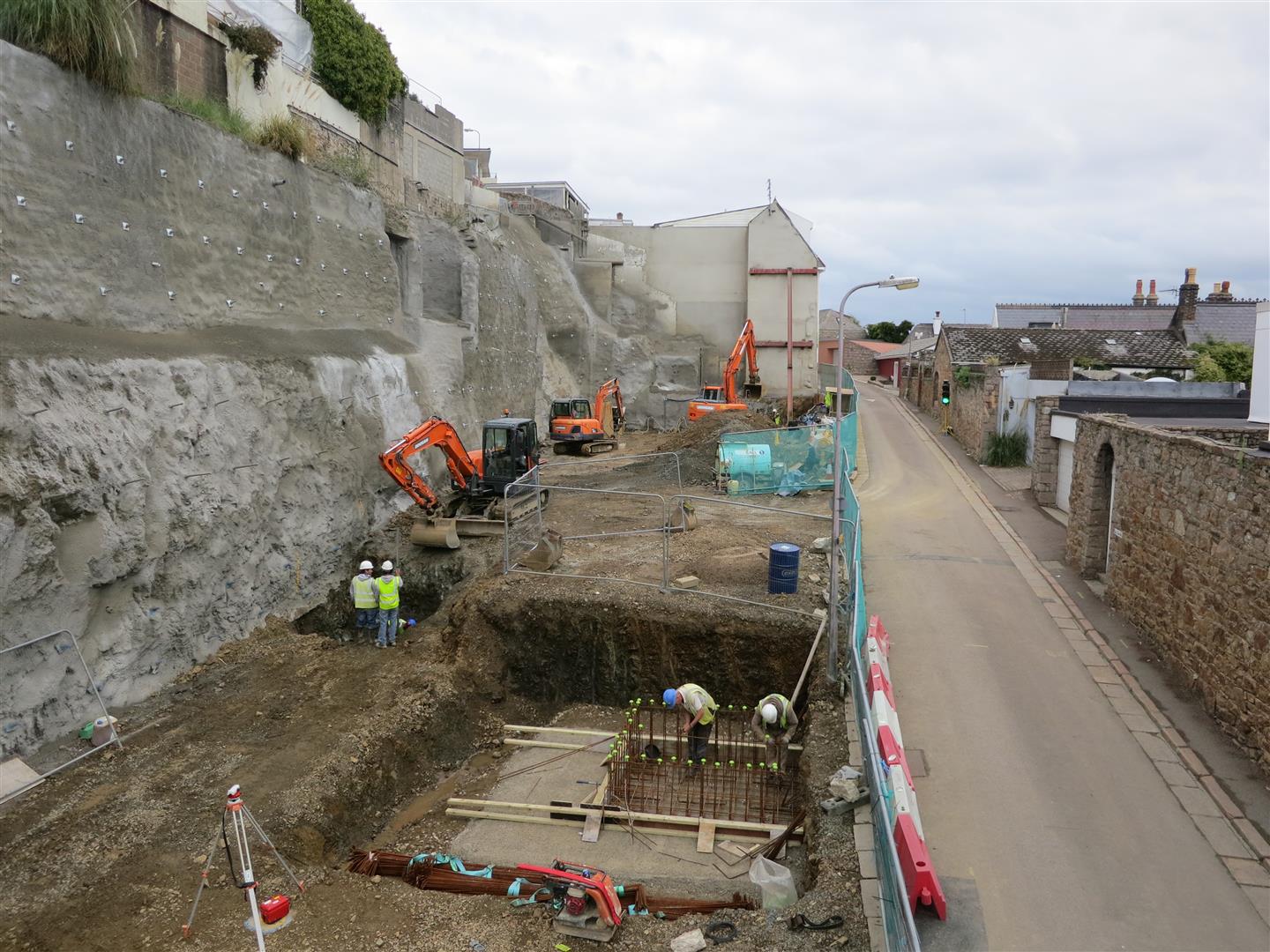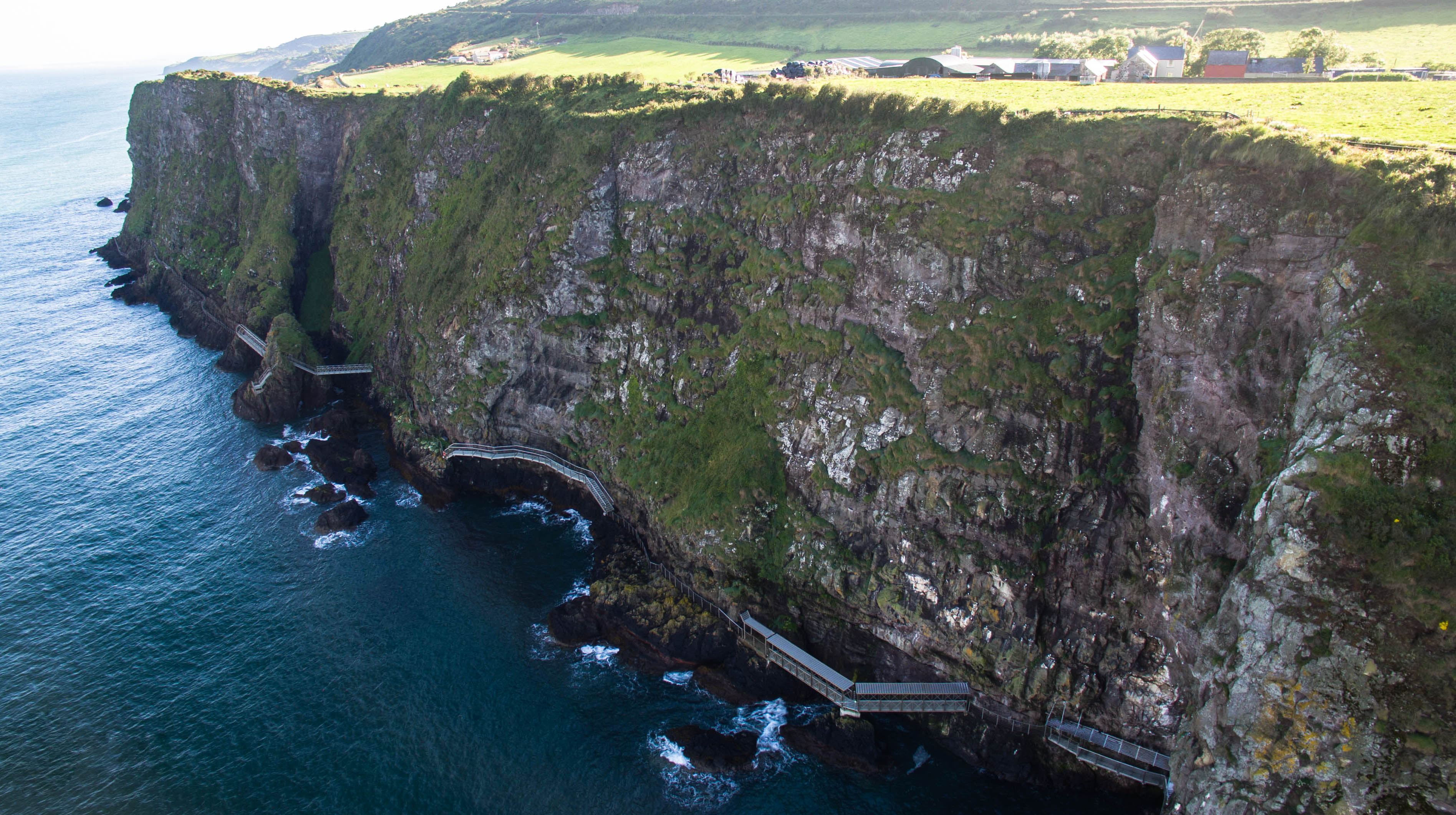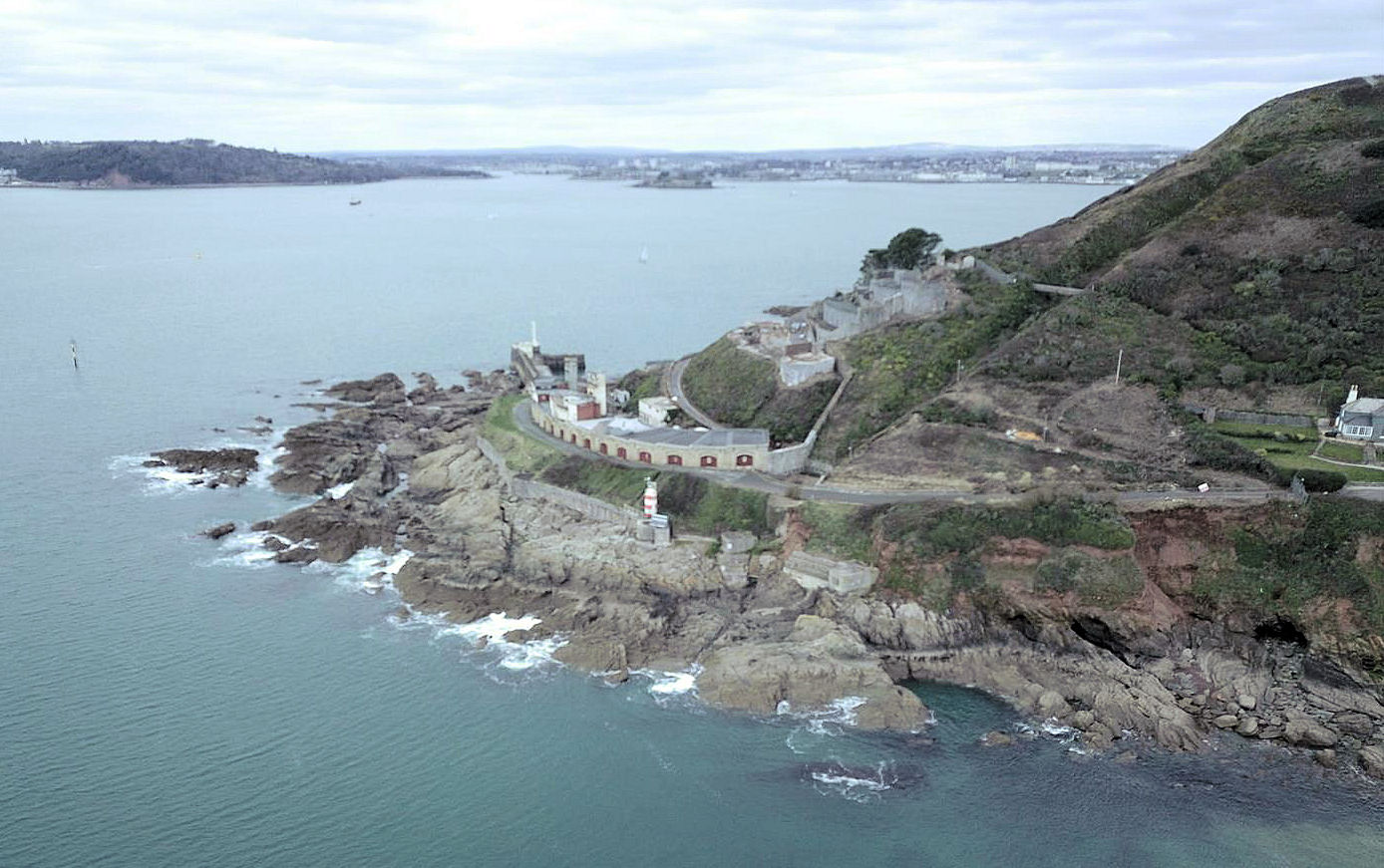St Aubin, Jersey
Red Rock have undertaken many larger slope stabilisation schemes for commercial premises and developments.
Following an instability at a hotel site in Jersey, Red Rock were commissioned to provide a stabilisation design for a 20m high slope comprising existing walls as well as soil and rock sections.
Prior to our involvement little geotechnical information was available on the slope conditions behind existing walls, as the site was completely obscured by a supporting rockfill buttress. This required our preliminary design to be modified in phases as the ground conditions were revealed as the buttress was lowered to provide an access platform for anchor installation.
Both rock bolts and soil nails, between 3 and 9m length, were required to support existing walls. Excavation below the walls into the highly fractured and decomposed Jersey Slates then required additional bespoke stabilisation design. A close working collaborative approach with the slope stabilisation contractor and principal contractor enabled these works to be satisfactorily completed.
Other similar cases included that of an Environmental Laboratory, in Brixham, Devon, where our engineers were involved in the stabilisation of a 30m high cliff behind a commercial laboratory in Brixham. Those works which were inspected using the largest cherry picker available in the UK, require 6 and 8m long tensioned rock anchors. And at an Art Gallery, in Cornwall, Red Rock designed the stabilisation measures for a rock slope section to support a major section of a new national gallery.
